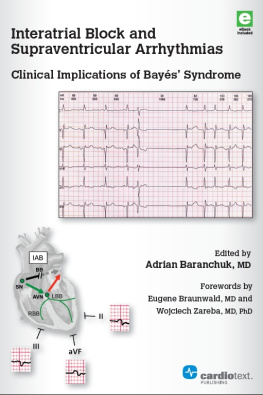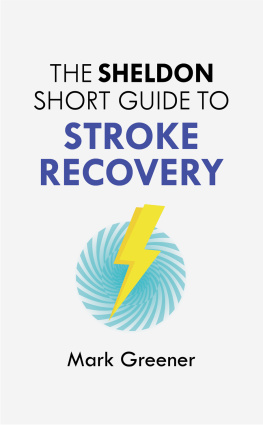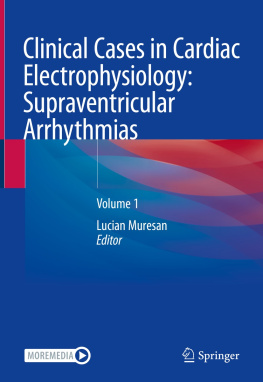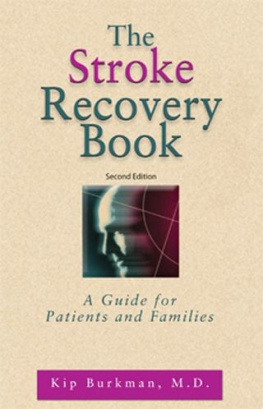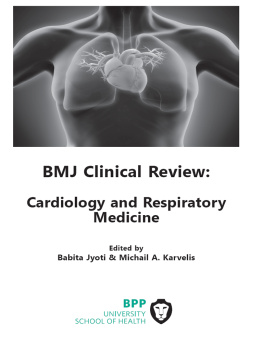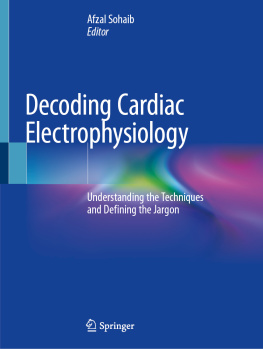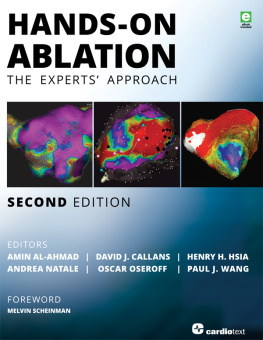Adrian Baranchuk (ed.) - Interatrial Block and Supraventricular Arrhythmias: Clinical Implications of Bayes’ Syndrome
Here you can read online Adrian Baranchuk (ed.) - Interatrial Block and Supraventricular Arrhythmias: Clinical Implications of Bayes’ Syndrome full text of the book (entire story) in english for free. Download pdf and epub, get meaning, cover and reviews about this ebook. year: 2017, publisher: Cardiotext Publishing, genre: Home and family. Description of the work, (preface) as well as reviews are available. Best literature library LitArk.com created for fans of good reading and offers a wide selection of genres:
Romance novel
Science fiction
Adventure
Detective
Science
History
Home and family
Prose
Art
Politics
Computer
Non-fiction
Religion
Business
Children
Humor
Choose a favorite category and find really read worthwhile books. Enjoy immersion in the world of imagination, feel the emotions of the characters or learn something new for yourself, make an fascinating discovery.
- Book:Interatrial Block and Supraventricular Arrhythmias: Clinical Implications of Bayes’ Syndrome
- Author:
- Publisher:Cardiotext Publishing
- Genre:
- Year:2017
- Rating:3 / 5
- Favourites:Add to favourites
- Your mark:
Interatrial Block and Supraventricular Arrhythmias: Clinical Implications of Bayes’ Syndrome: summary, description and annotation
We offer to read an annotation, description, summary or preface (depends on what the author of the book "Interatrial Block and Supraventricular Arrhythmias: Clinical Implications of Bayes’ Syndrome" wrote himself). If you haven't found the necessary information about the book — write in the comments, we will try to find it.
Interatrial blocks were described several decades ago; however, they are now gaining the attention of the medical community as a means of helping to identify patients at high risk of developing atrial fibrillation and/or cardio-embolic stroke.
I welcome all readers to navigate this book and to become familiar with this concept that is helping to renovate our models of predicting atrial fibrillation and stroke.
Foreword by Eugene Braunwald, MD:
Cardiologists are well acquainted with partial and complete blocks of conduction in the atrioventricular node, bundle of His, bundle branches, and within the ventricles. The prognostic implications and management of these blocks have been well described for decades. However, this has not been the case for blocks of interatrial conduction. While normal depolarization of the two atria and the bundle of myocardial fibers connecting them (Bachmann s bundle) were described early in the twentieth century, the recognition of blocks in interatrial conduction leading to delayed activation and contraction of the left atrium came much later, and until relatively recently have received little attention.
Professor Antoni Bays de Luna is a distinguished and highly respected Spanish cardiologist who is widely recognized as the leading figure in contemporary clinical electrocardiography. Among his many achievements is his work on interatrial conduction blocks, which he has pursued over almost four decades. Professor Bays has studied, investigated, described, and taught the cardiology community about this subject. In addition to providing rigorous criteria for the diagnosis and classification of the severity of these conduction blocks, he has recognized and emphasized their important association with supraventricular tachyarrhythmias. Quite appropriately, this syndrome of interatrial conduction blockade associated with these arrhythmias, most often atrial flutter or fibrillation, has been named the Bays Syndrome.
Professor Bays has stimulated research around the world on this syndrome. It has been learned that the syndrome occurs with increasing frequency in the elderly and may be caused by ischemia, produced most commonly by atherosclerotic obstruction of the right coronary artery, as well as by atrial distension and/or fibrosis. Importantly, the Bays syndrome appears to be a risk factor for cardio-embolic stroke. This has raised the possibility that preventive oral anticoagulant therapy, particularly with one of the newer oral anticoagulants, might be useful in patients with advanced interatrial block, even in the absence of clinically evident atrial fibrillation.
Interatrial Block and Supraventricular Arrhythmias: Clinical Implications of Bays Syndrome, has been superbly edited by Adrian Baranchuk, an important clinical investigator of the syndrome. Baranchuk has thoughtfully and successfully pulled together the many threads of clinical research on the syndrome. This book will surely stimulate interest in what has been a largely neglected corner of cardiology. As a consequence of the outstanding work of Bays, Baranchuk, and the authors who have contributed to this book, interatrial block is no longer a stepchild.
Eugene Braunwald, MD
Adrian Baranchuk (ed.): author's other books
Who wrote Interatrial Block and Supraventricular Arrhythmias: Clinical Implications of Bayes’ Syndrome? Find out the surname, the name of the author of the book and a list of all author's works by series.

